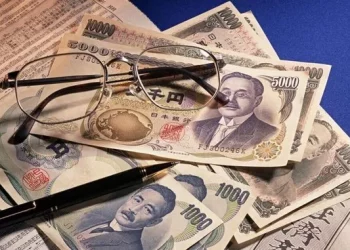Japan, one of the world’s most economically powerful countries, has a unique and fascinating financial system. With its rich history and profound influence on global trade, Japan plays an essential role in the foreign exchange market. But despite its importance in the global economy, many people may wonder, “What currency does Japan use?” This question may seem straightforward, but understanding the currency of Japan goes far beyond knowing just the name of the currency. It involves exploring its historical background, the factors that influence its value, and its role in the global financial system.
The Official Currency of Japan
The official currency of Japan is the Japanese yen, symbolized as ¥ and represented by the international currency code JPY. The yen is one of the most widely traded currencies in the world, often ranking third in global forex trading volume, following the U.S. dollar (USD) and the euro (EUR). The strength of the yen, along with Japan’s economic position, makes it a key player in the foreign exchange market.
The yen is used not only for domestic transactions but also plays a crucial role in international trade, finance, and investment. As one of the “reserve currencies,” it is held in significant quantities by foreign governments and financial institutions, particularly in the form of foreign exchange reserves. The yen is also a preferred currency for carrying out financial transactions in various regions due to its stability and liquidity.
Historical Background of the Yen
The Japanese yen has an interesting history, one that reflects Japan’s transition from a feudal society to an industrialized global power. The yen was introduced during the Meiji Era, which lasted from 1868 to 1912, as part of Japan’s broader effort to modernize its economy and military. Before the yen, Japan used a variety of currencies, including the ryo (a gold coin) and the mon (a silver coin), which were in circulation during the feudal period.
In 1871, the Japanese government established the yen as the country’s official currency. The name “yen” is derived from the Japanese word “en,” which means “circle” or “round,” referring to the coin’s round shape. The government also adopted a fixed exchange rate system, pegging the yen to the gold standard, which meant that the value of the currency was directly tied to a fixed amount of gold.
Evolution of the Yen and Its Role in the Global Economy
The yen underwent several transformations in the 20th century. Following World War II, Japan’s economy was devastated, and the yen experienced a sharp depreciation. The Japanese government, with the help of the United States, adopted measures to stabilize and rebuild the country’s economy. The yen’s value fluctuated during the 1940s and 1950s, and by the 1960s, Japan had become an economic powerhouse.
One of the major turning points in the yen’s history occurred in 1971 when the United States abandoned the Bretton Woods System, which had previously established fixed exchange rates between currencies. As a result, the yen, along with many other currencies, became subject to floating exchange rates. This shift made the value of the yen more dependent on market forces like supply and demand, inflation, and interest rates, rather than being tied to gold or other commodities.
Japan’s economic boom in the 1980s and 1990s further solidified the yen’s position as a key currency in the global market. The country’s export-driven economy, supported by its advanced technology and manufacturing industries, helped create significant demand for the yen. By the late 20th century, the yen was recognized as one of the most stable and liquid currencies, often used for international trade and investment.
The Structure of the Japanese Yen
The Japanese yen is subdivided into 100 sen or 100 rin, though the use of these smaller units is largely historical, and today, only the yen (¥) is in common circulation. Yen coins are available in denominations of 1, 5, 10, 50, 100, and 500 yen. Paper notes are issued in denominations of 1,000, 5,000, and 10,000 yen.
The Bank of Japan, the country’s central bank, is responsible for issuing and managing the yen. The bank’s primary role is to maintain price stability, support economic growth, and foster a sound financial system. To achieve this, the Bank of Japan uses tools such as interest rates and quantitative easing to influence the money supply and stabilize the value of the yen.
Factors Influencing the Value of the Yen
The value of the yen, like all currencies, is influenced by a variety of factors, both domestic and international. Some of the most significant influences on the yen’s value include:
Interest Rates: The Bank of Japan sets the country’s key interest rates. These rates influence the demand for the yen in the global forex market. When interest rates are low, the yen typically weakens, as investors seek higher returns in other currencies. Conversely, when interest rates rise, the yen tends to strengthen.
Economic Data: Economic indicators such as GDP growth, unemployment rates, inflation, and trade balances can affect the yen’s value. Strong economic data usually supports a stronger yen, while weak economic data can lead to depreciation.
Monetary Policy: The Bank of Japan plays a key role in shaping the yen’s value through its monetary policy. The central bank’s actions, such as changing interest rates or implementing quantitative easing, can have a significant impact on the yen’s strength. For example, during times of economic stagnation, the Bank of Japan may lower interest rates or inject money into the economy, which can lead to a weaker yen.
Global Risk Sentiment: The yen is often considered a “safe-haven” currency, meaning that during periods of global economic uncertainty or financial crises, investors tend to move their assets into yen. This increases demand for the currency, causing its value to rise. Conversely, during periods of economic optimism, investors may sell yen in favor of higher-yielding currencies.
Trade and Export Performance: Japan is a major exporter of automobiles, electronics, and machinery. A trade surplus, where Japan exports more than it imports, tends to support a stronger yen. Conversely, a trade deficit can lead to a weaker yen as demand for foreign currency rises.
Geopolitical Factors: Political instability, both within Japan and globally, can influence the yen’s value. Tensions in the Asia-Pacific region, natural disasters, or shifts in Japan’s political landscape can lead to fluctuations in the currency’s value.
The Yen in the Global Forex Market
The yen’s status as one of the most widely traded currencies in the world makes it an essential component of the foreign exchange (forex) market. Forex trading is the act of buying and selling currencies, and the Japanese yen plays a significant role in the global market. According to the Bank for International Settlements, the yen accounts for nearly 17% of daily global forex trading volume, making it the third most traded currency, after the U.S. dollar and the euro.
The yen is frequently traded against other major currencies such as the U.S. dollar (USD/JPY), the euro (EUR/JPY), and the British pound (GBP/JPY). The USD/JPY currency pair, in particular, is one of the most liquid and widely traded pairs in the forex market, with millions of dollars transacted daily. This high level of liquidity makes the yen an attractive currency for traders, investors, and businesses involved in international trade.
In addition to its role in daily forex trading, the yen is also used as a reserve currency by many countries. Central banks and financial institutions hold yen as part of their foreign exchange reserves, which can be used to stabilize their own currencies or to meet other international obligations. The yen’s stability and liquidity make it a reliable asset in times of market uncertainty.
The Yen’s Role in Japan’s Economy
The yen plays a central role in Japan’s domestic economy, particularly in the context of international trade and business. As one of the world’s leading exporters, Japan’s economy is highly dependent on the yen’s value relative to other currencies. A strong yen can make Japanese exports more expensive for foreign buyers, potentially hurting Japan’s export-driven industries. Conversely, a weaker yen can make Japanese goods more affordable abroad, boosting demand for exports and supporting the economy.
The value of the yen also affects Japan’s monetary policy. The Bank of Japan carefully monitors the exchange rate to ensure that it does not become too volatile. If the yen strengthens too much, it can hurt exporters and lead to slower economic growth. On the other hand, if the yen weakens too much, it can trigger inflation and lead to rising import prices, which can affect consumers and businesses.
Conclusion
In conclusion, Japan’s currency, the yen (JPY), is one of the most important and widely traded currencies in the world. Its historical roots trace back to the Meiji Era, and it has evolved into a vital asset in global financial markets. The value of the yen is influenced by factors such as interest rates, economic data, global risk sentiment, and geopolitical events, making it a dynamic and often volatile currency. For anyone interested in foreign exchange trading or global finance, understanding the yen is crucial, as it plays a central role in both domestic and international markets. Whether you are a trader, investor, or simply someone interested in world economies, the Japanese yen is a key component in understanding global financial trends and dynamics.
Related Topics:



























